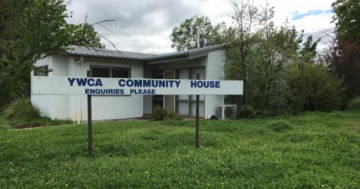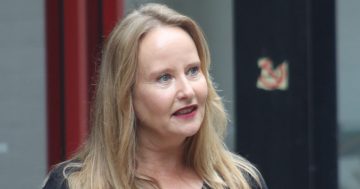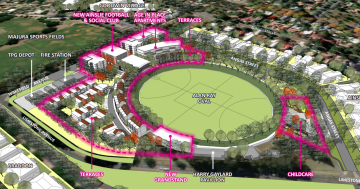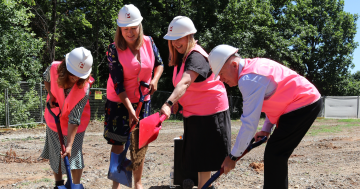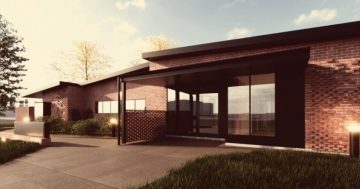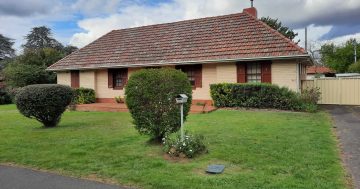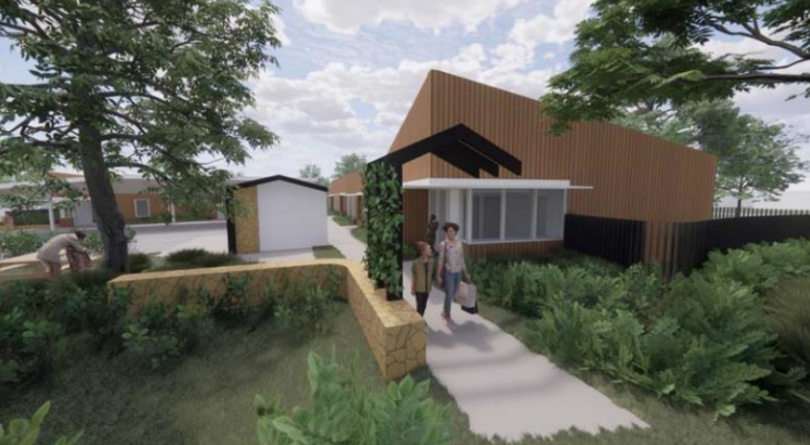
An artist’s impression of the rejected supportive housing project. Image: AMC Architecture.
YWCA Canberra is determined to press ahead with its supportive housing proposal in Ainslie despite the development application being comprehensively canned in the ACT Civil and Administrative Tribunal (ACAT).
The Rutherford Crescent project would have delivered 10 single-storey units to provide homes for older women and women escaping domestic and family violence.
But the proposal attracted opposition from nearby residents who were concerned that traffic changes would make the street less safe, Bill Pye Park next door would be impacted, and that the development was not in keeping with the low-density character of the neighbourhood.
The YWCA Canberra board is considering its next steps but CEO Frances Crimmins said in a statement that despite the setback it was determined to persevere and continue to work with the ACT Government to progress the YHomes project.
“We are very disappointed in the decision from the Tribunal, and the delay it will cause in making these much-needed homes available to vulnerable women,” Ms Crimmins said.
She said that during the current lockdown period, YWCA Canberra’s housing services had been flooded with requests, making the shortfall in supported housing supply in Canberra even more evident and the need for projects like YHomes even greater.
“YWCA Canberra participated in good faith and with full cooperation in the Tribunal process, relating to our YHomes development in Ainslie,” Ms Crimmins said.
“Our mission with this project is to use the land we own to make the most impact for vulnerable women and their children in Canberra by building 10 units to support older women and women escaping domestic violence with safe and secure housing.”
She said that since the Tribunal decision, the organisation had been inundated with messages from the Ainslie community expressing their disappointment in the decision, and their wholehearted support for this development.
“We know that the need for housing options such as YHomes is only growing, and … we look forward to providing the community with more information in the coming weeks as we progress this further,” she said.
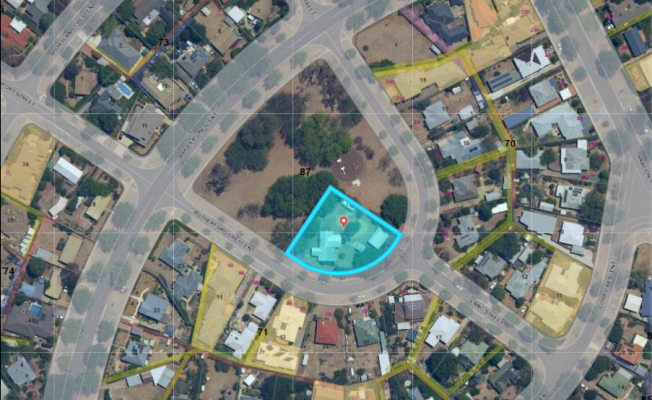
The location of the site in Ainslie.
But YWCA Canberra and its architects will have to make significant changes to the project after ACAT found that the proposal did not comply with a swag of planning rules, and that the site was too small for a 10-unit supportive housing development.
It found that the proposal would impact significant trees bordering the site, the proposed fencing was not compliant and would not give residents sufficient privacy, setbacks were too small, there was insufficient outside space, and the units would not receive adequate sunshine.
There was also not enough room for parking, which needed to include space for visitors because the curve of the street meant off-site parking was unsafe.
ACAT found that the project would also impact the desired character of the area.
“The Tribunal considers that the development proposal provides for change of a different order in terms of its immediate and potential long-term negative effects on the landscape character of the park, flora and fauna habitats, streetscape and amenity for residents and other park users,” ACAT said.
“The contrast with what is there now could not be more striking.”
Community representative Ian Hubbard said the decision vindicated the opposition to what was found to be a poorly designed project and shone a light on the inadequacies of the planning authority which approved it.
He said the approval’s reasons for the decision were insufficient in providing any analysis of what the issues were.
“In fact, ACTPLA in that process either denied the issues that were raised or said there wasn’t a rule or criteria that covered them or in fact that the proposal satisfied the rules and criteria,” Mr Hubbard said.
“It’s a worry when you’ve got an authority whose responsibility is to enact the planning rules and planning legislation and they can’t do that.
“From the point of view of residents trying to protect community facilities from demolition, that was really a disappointment.”
Mr Hubbard said that if YWCA Canberra intended to press on with the project the Tribunal showed quite conclusively that it needed a lot more than just an architect’s tweaks to be suitable for that site.
“Clearly they can’t squeeze 10 units on to that site … so they will have to come back with a lower number or go two-storey to fit it in,” he said.
The community had written to YWCA Canberra proposing a land swap be investigated to find a site that was more suitable and more appropriate for the facility, and one that would provide greater safety and fit better into the suburb to make it less conspicuous.
Mr Hubbard said the residents supported social housing and had endured a tough fight with YWCA Canberra, but they had been proven right in the end.











